Traditionally one of Texas’ historic areas, Lubbock County has a booming economy and a growing population. Centered around the titular city, the county has a diverse portfolio of businesses that have thrived in the past decade. In that timeframe, property values have nearly doubled, while residential values have almost tripled. Much of this is thanks to Lubbock County’s growth, but there is certainly suspicion of overaggressive valuation and taxation by the Lubbock Central Appraisal District (LCAD). It was estimated that LCAD had overvalued 32% of homes in 2025 alone, leading to greater questioning into the honesty of tax bills.
This has led to a growing movement to use property tax appeals. 16.26% of all properties were appealed in 2023, which was the highest yet seen. Higher taxes have made property tax appeals more viable for the average taxpayer, and they are finally exploring their constitutional right to dispute their assessments. Informal and formal appeals with the appraisal review board (ARB) have finally concluded and in this article, we will see how well these were able to counter the rising tide of taxes.
Informal and Formal Appeals Reduced Home Values by 1.3%
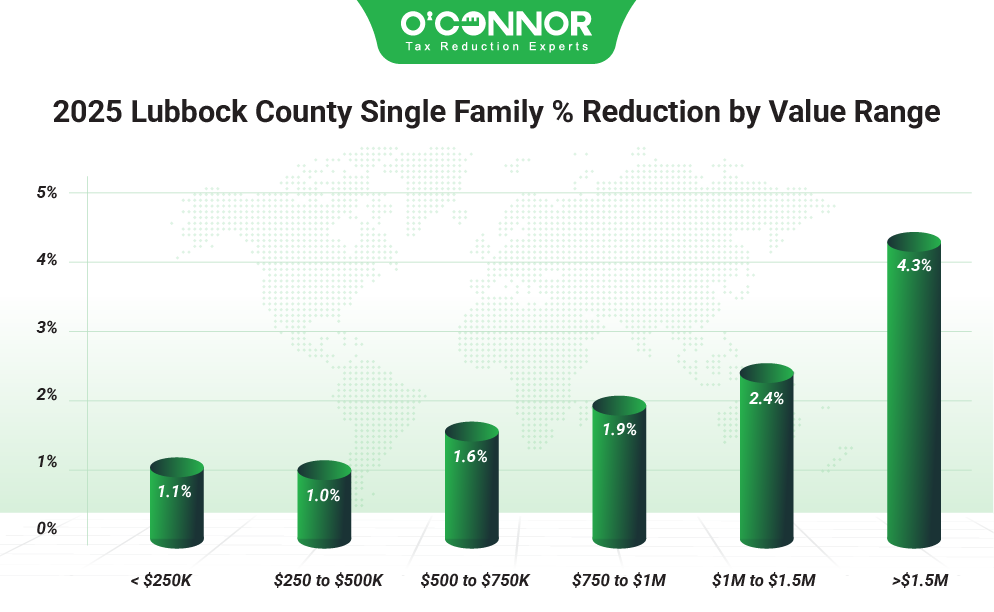
While not an outrageous jump, the taxable value of homes in Lubbock County increased by 2.9%, achieving a combined total of $23.64 billion. Taxpayers countered this with both informal and formal appeals, finally achieving a reduction of 1.3%, making the new total $23.34 billion. Homes worth under $250,000 were the biggest contributor and were responsible for $9.81 billion after a cut of 1.1%. These were followed by homes worth between $250,000 and $500,000, which dropped 1% to $8.72 billion. These had previously risen 1.9% and 2.2% respectively. The new major source of taxable value was homes worth between $500,000 and $750,000, which were originally increased by 4.7%, but were eventually lowered by 1.6% to $2.70 billion. We at O’Connor were able to help homeowners that joined us by lowering their overall taxable value by 5.6%.
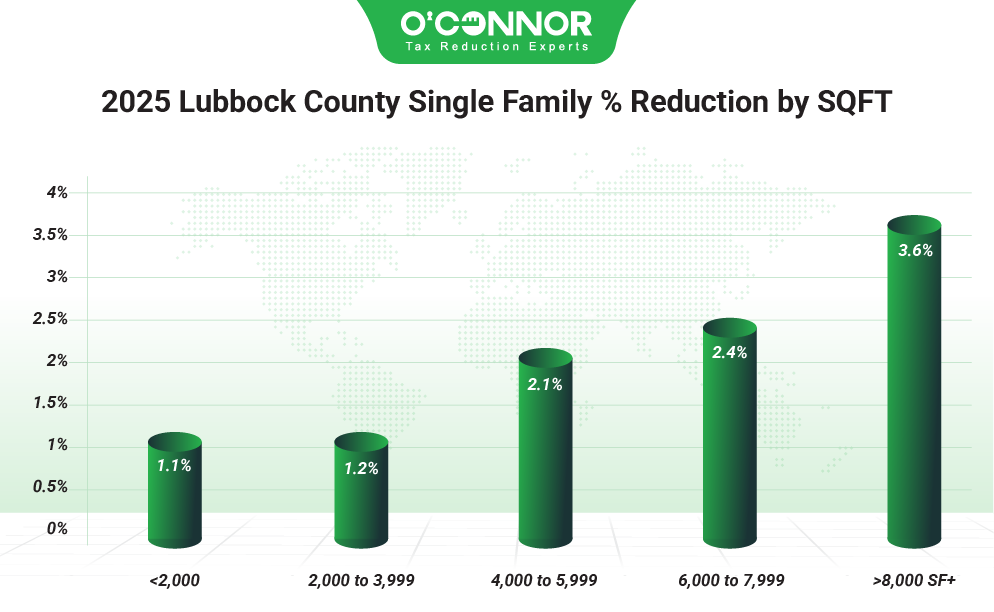
Lubbock County has a history going back to the days of the Old West, and that has always been a story of hardworking people living practical lives. With that in mind, it is fitting that most of the residential value in the county comes from modest homes. Homes under 2,000 square feet generated $10.25 billion in value, while those between 2,000 and 3,999 square feet reached $10.82 billion. These totals were received after reductions of 1.1% and 1.2% respectively. Homes between 4,000 and 5,999 square feet saw a reduction of 2.1%, falling to $1.71 billion. Large homes only accounted for a fraction of the complete value but received reductions of 2.4% and 3.6%.
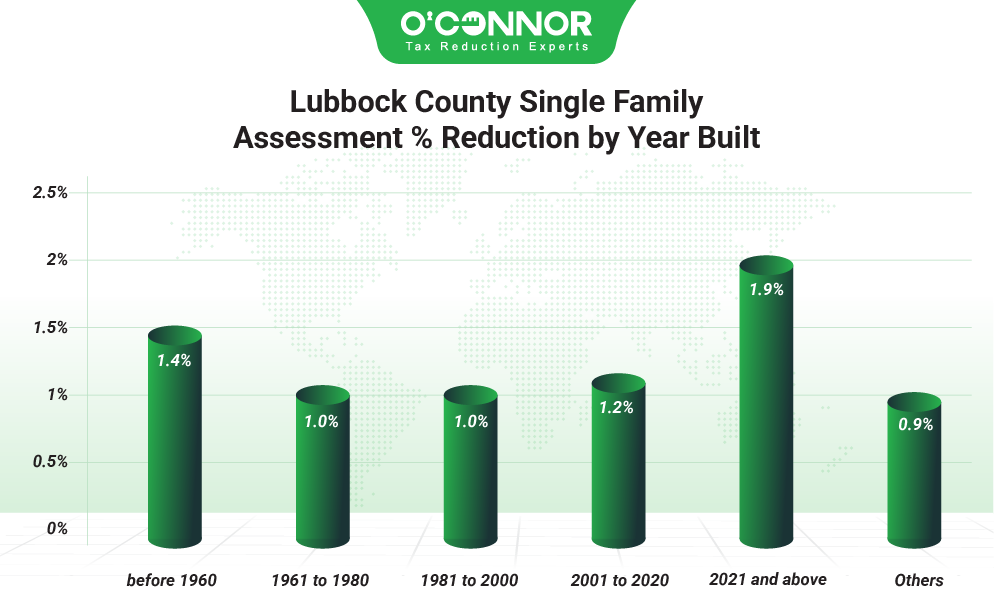
Lubbock County straddles the line between tradition and the modern Texas build boom. This is reflected in the value of homes when compared to their age of construction. After a reduction of 1.2%, $8.14 billion in taxable value came from homes constructed between 2001 and 2020. The next two categories skewed much older, with those built from 1961 to 1980 accounting for $4.57 billion, while those from 1981 to 2000 were responsible for $3.94 billion. Each of these were eventually reduced by 1%. Even the oldest homes, those from before 1960, saw a combined value of $3.80 billion after a drop of 1.4%. New construction did come on strong in 2025, adding 21.9% in value, totaling $2.97 billion after a reduction of 1.9%.
Appeals Cut $241 Million in Value from Business Real Estate
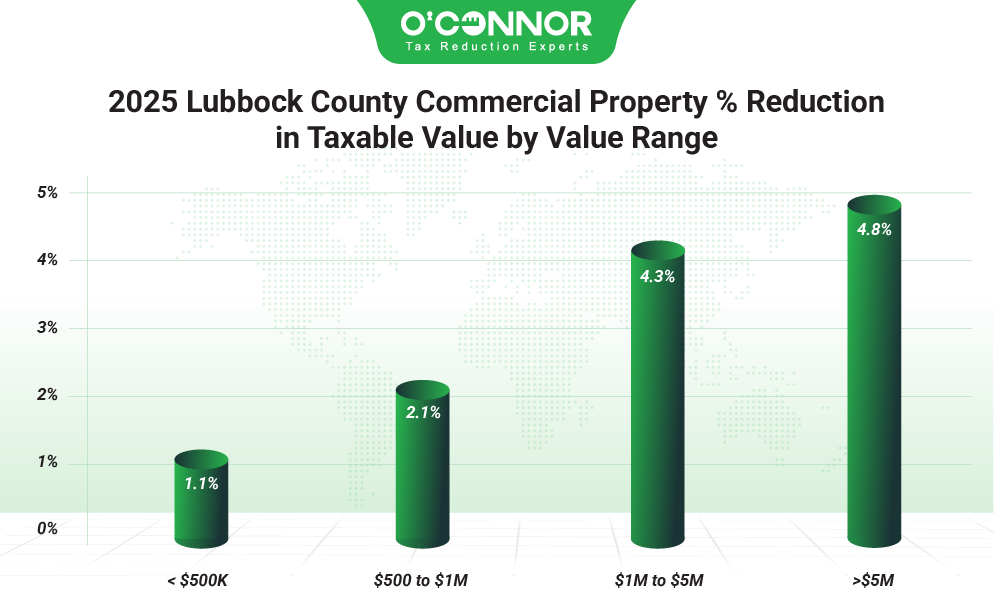
LCAD claimed that the total value of commercial property in Lubbock County increased by 3.6%, resulting in a combined sum of $6.48 billion. This was quickly targeted by appeals, reducing the overall figure to $6.24 billion, a cut of 3.7%. As is typical of Texas counties, Lubbock’s largest source of commercial value was businesses worth over $5 million. These saw a solid reduction and ended up dropping 4.8% to a new total of $2.76 billion. In second place were business properties worth between $1 million and $5 million. These saw a reduction of 4.3%, resulting in a total value of $1.57 billion. In third place were small businesses, which saved 1.1% on their taxable value and totaled $1.04 billion.
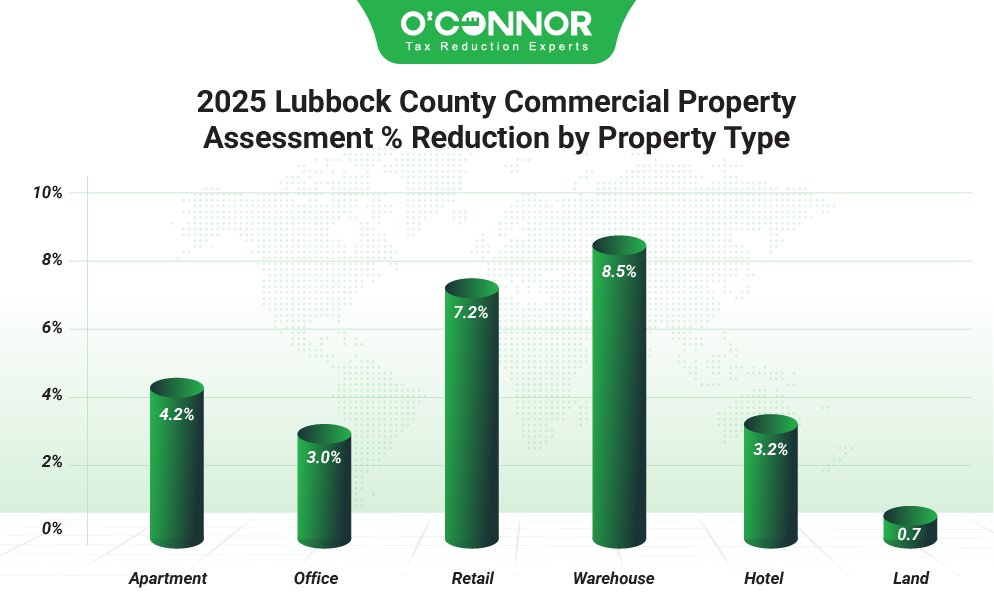
Like most major counties, the No. 1 source of commercial value is apartments. Multifamily housing comprised $2.13 billion in value after a reduction of 4.2%. After a tiny cut of 0.7%, raw land was in second place with $1.40 billion. Offices had seen an increase of 4.5%, but this was knocked down by 3% for a final result of $1.26 billion. Retail received a large slashing of 7.2%, while warehouses got the biggest savings at 8.5%. These totaled $817. 77 million and $247.44 million respectively. With the exception of land and offices, all categories of commercial property saw their increases wiped out completely by property tax appeals, sometimes driving them back to 2024 levels.
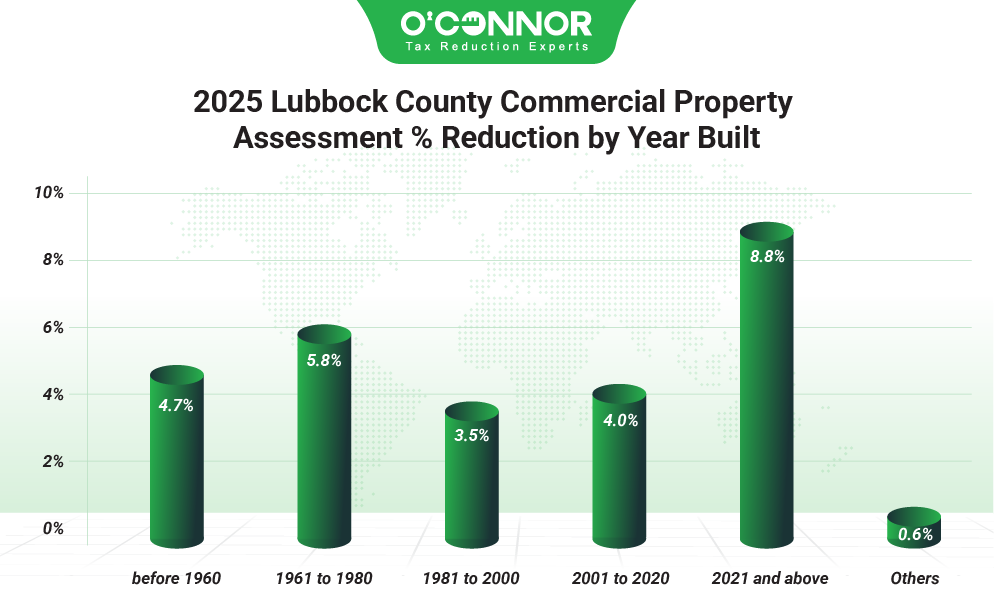
While similar to homes when it comes to age of construction, commercial real estate trended a bit more toward recent construction. 39.8%, or $2.48 billion, was built during the boom period of 2001 to 2020. This total was after a solid decrease of 4%. 1981 to 2000 produced $905.45 million in value after a cut of 3.5%. Following a large reduction of 5.8%, those built from 1961 to 1980 contributed $880.22 million. New construction added 22% more value in 2025, but this was protested down 8.8%, resulting in a final sum of $303.55 million. The growth of all timeframes was completely mitigated by appeals, with the exception of new construction and the oldest businesses.
Apartment Taxable Value Hikes Nearly Wiped Out by Appeals
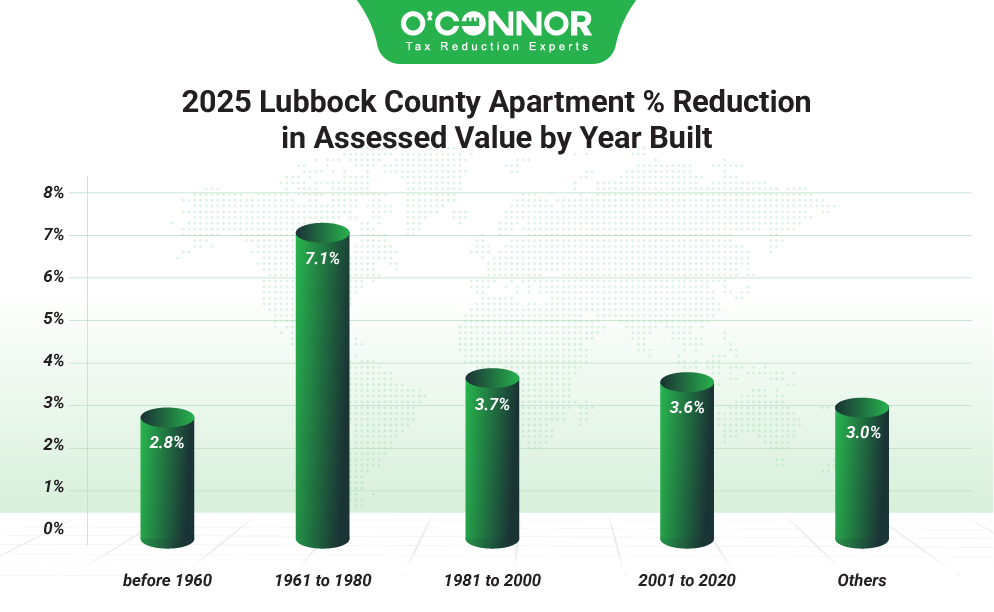
Apartment values initially spiked by 4.1% in 2025, though there were several categories that had seen significant reductions as well, even before appeals. The spike was almost solely thanks to those built between 2001 and 2020, which increased by 7.2% to $1.36 billion. This made these apartments responsible for almost 61.6% of all value. Appeals quickly moved to cut this down, and a reduction of 3.6% to $1.31 billion was achieved. Those constructed from 1981 to 2000 fell 3.7%, annihilating a small increase to end up with a final result of $280.98 million. Strangely, New Construction only added 0.3%, but was slashed hard by 3%, dropping the total to $116.64 million.
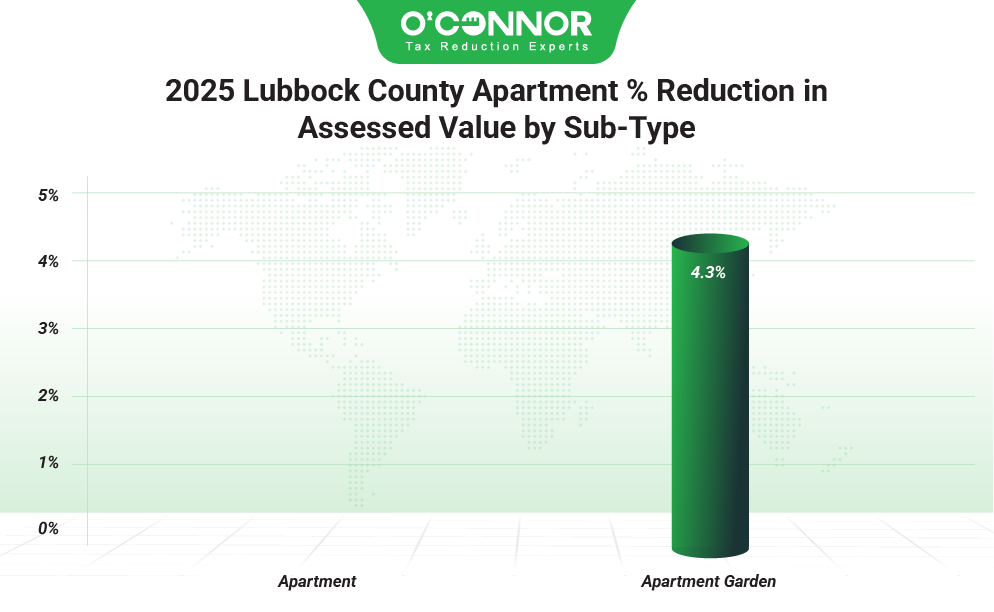
LCAD only classified apartments into two subtypes. Garden apartments saw a reduction of 4.3%, falling to a total of $2.09 billion, while generic apartments held steady at $40.88 million, seeing neither an increase nor decrease.
Offices Grow, but Still See a Strong Decrease
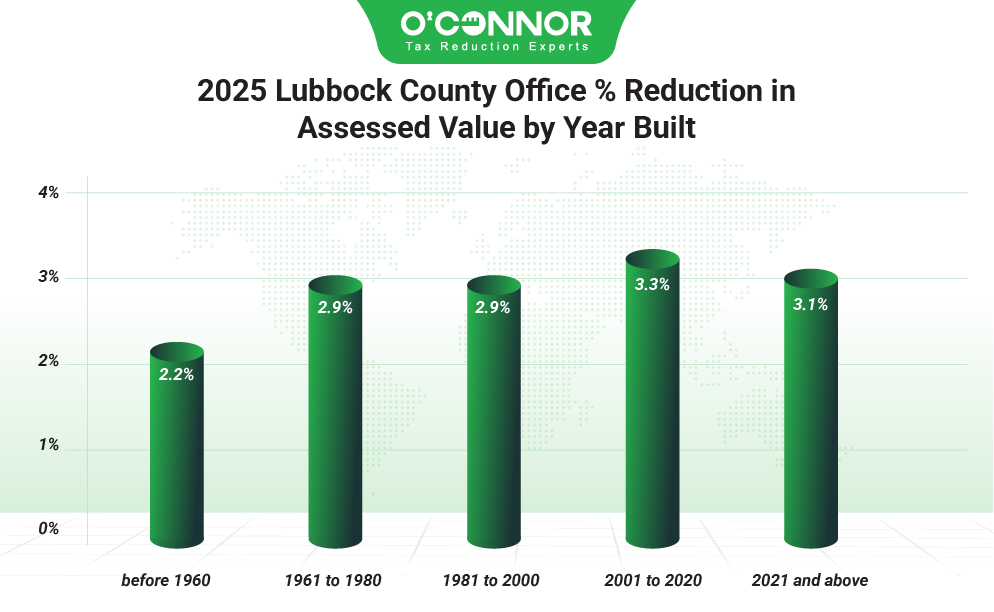
Offices were one of the few commercial properties that did not see their gains totally mitigated by appeals, though much of the bleeding was stemmed. To no surprise, those built from 2001 to 2020 were in the lead, growing 3.6% to $476.94 million. This was countered by an appeal reduction of 3.3%, taking the total to $460.39 million. With a cut of 2.9%, those built from 1981 to 2000 reached $343.36 million, obliterating a rise of just 0.2%. Office construction from 1961 to 1980 saw a reduction of 2.9%, cutting into a rise of 4.5% for a new total of $220.37 million. New construction jumped 15.7%, but this was partially slowed by a reduction of 3.1%, creating a final sum of $115.14 million.
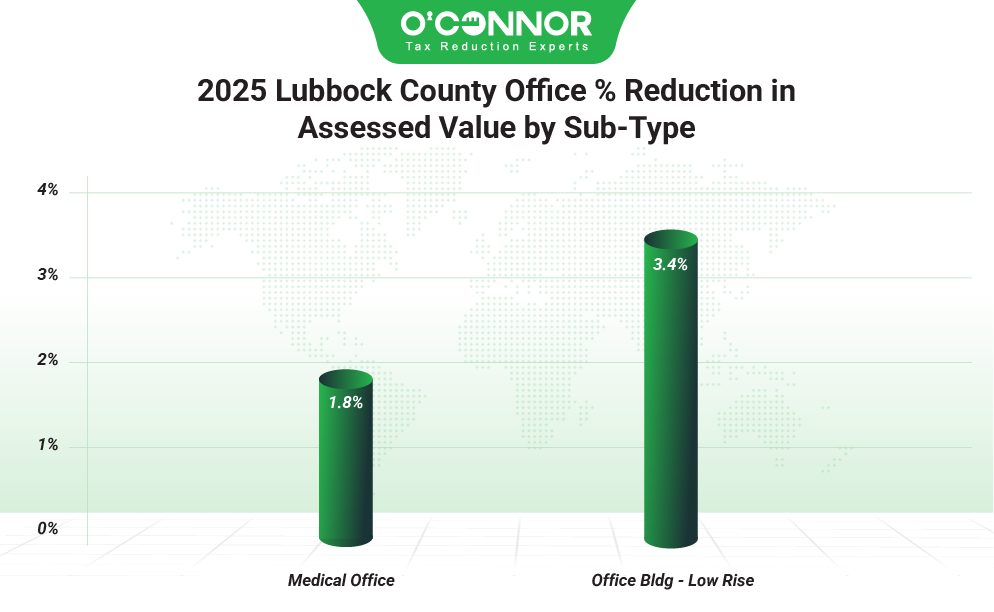
Like apartments, LCAD decided to count only two categories of offices. Low-rise offices were the bigger of the two and dropped 3.4% to $929.34 million, which did significant damage to a previous rise of 5%. Medical offices had increased 3% to $342.92 million, but this was trimmed 1.8% to $336.74 million.
Retail Reductions of 7.2% Obliterate Increase of 3.7%
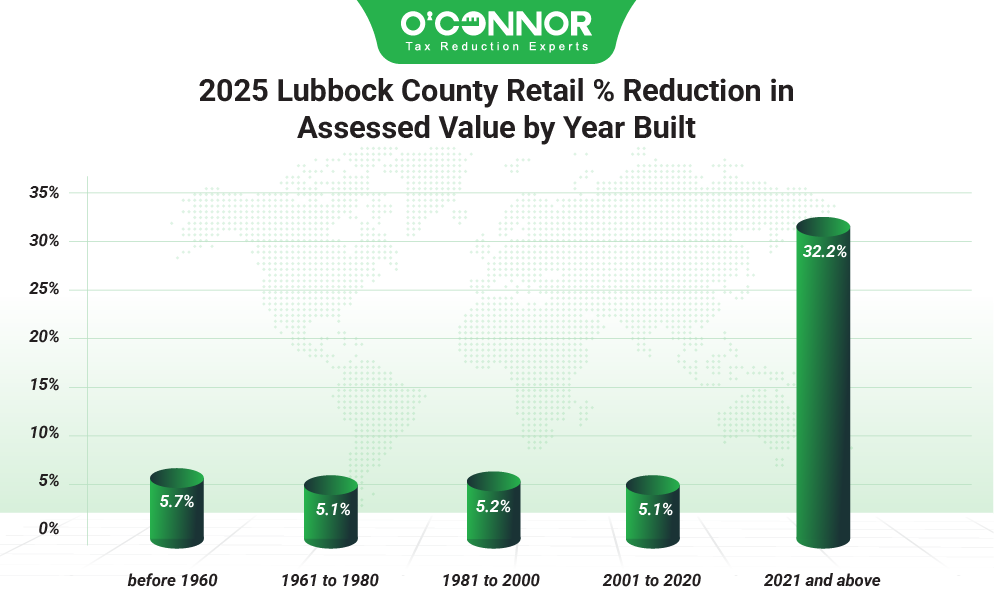
When it comes to retail spaces, informal and formal appeals were able to combine into a powerful force that not only eliminated a surge of 3.7% but pushed further thanks to a cut of 7.2%. The total went from $881.35 million to $817.77 million. Like all other properties, it was those constructed from 2001 to 2020 that achieved the most value, totaling $331.03 million after a solid reduction of 5.1%. Those built from 1961 to 1980, likewise were reduced by 5.1%, resulting in a final of $199.30 million. There was a slightly larger decrease of 5.2% for retail stores built from 1981 to 2000, which saw a new total of $177.41 million. New construction saw a titanic increase of 187%, while a decrease of 32% managed to slow it. The final total for new construction was $45.59 million.
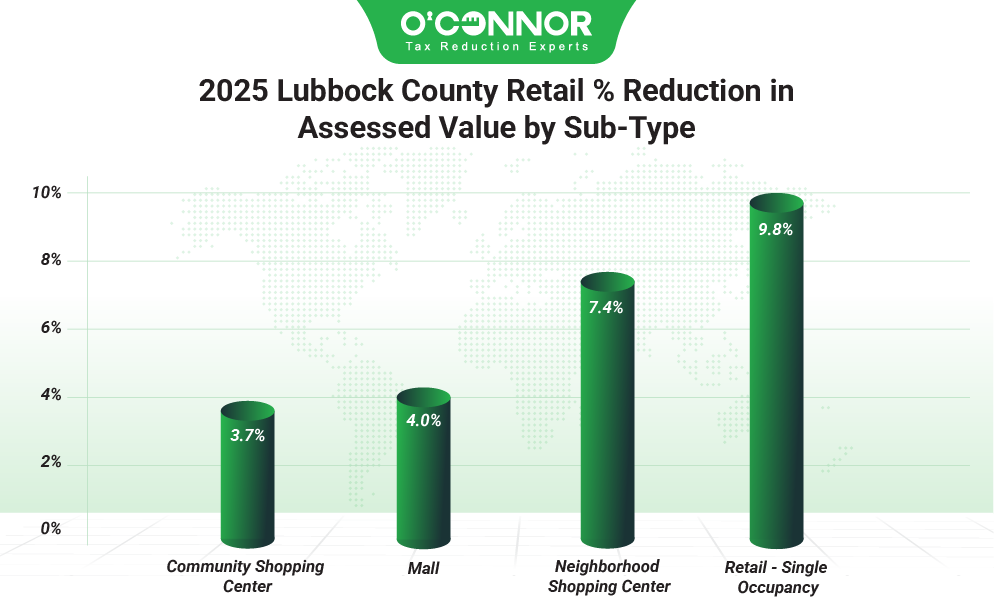
There were four subtypes of retail stores according to LCAD. Big box stores, also known as single-occupancy buildings, accounted for the most value, reaching $269.64 million after a trimming of 9.8%, which mostly countered a previous increase of 12.4%. Neighborhood shopping centers fell an astounding 7.4% thanks to appeals, reversing an increase of 2.9% to total $312.53 million. Community shopping centers saw their values fall in 2025, even before appeals, with a drop of 6.7%. Appeals followed up with a cut of 3.7%, bringing the final value to $147.14 million. Malls were reduced by 4% for a sum of $88.47 million.
Warehouses Experience Large Reductions Across the Board
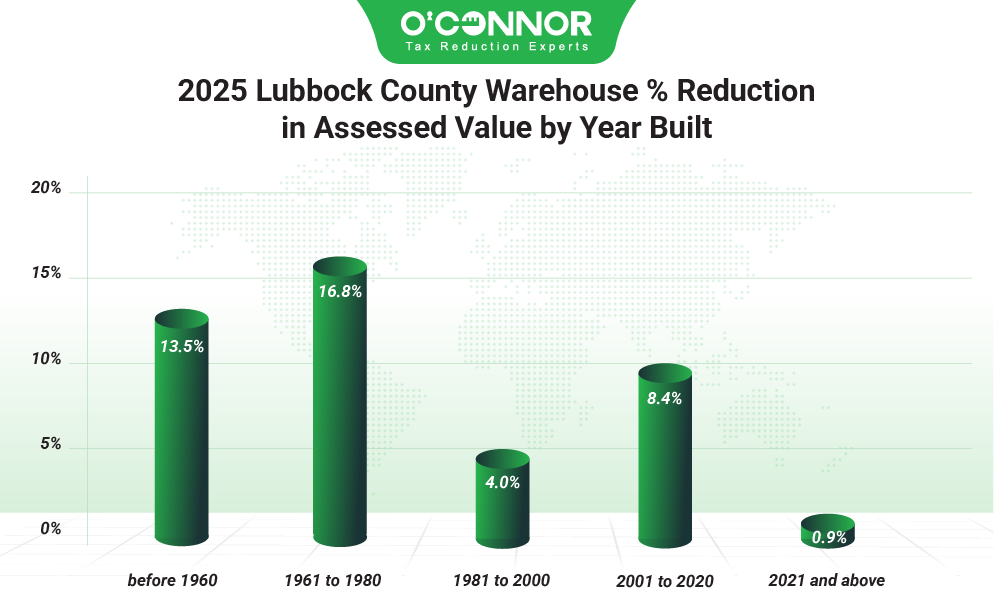
Warehouses saw the largest increase by percentage in 2025, rocketing up 5.4% to a total of $270.14 million. This large increase was soon hit with even bigger reductions. The overall value was lowered 8.5% to $247.44 million, which was below the 2024 total of $256.42 million. The previously established pattern for ages of construction saw little variation, with most value coming from warehouses built between 2000 and 2021, which decreased 8.4% to $109.45 million. 1981 to 2000 construction saw a reduction of 4%, which slowed an increase of 6.5%, resulting in a total of $44.58 million. New warehouses saw a small increase of 1.1%, which was battled by a decrease of 0.9%. The new construction total ended up being $33.43 million.
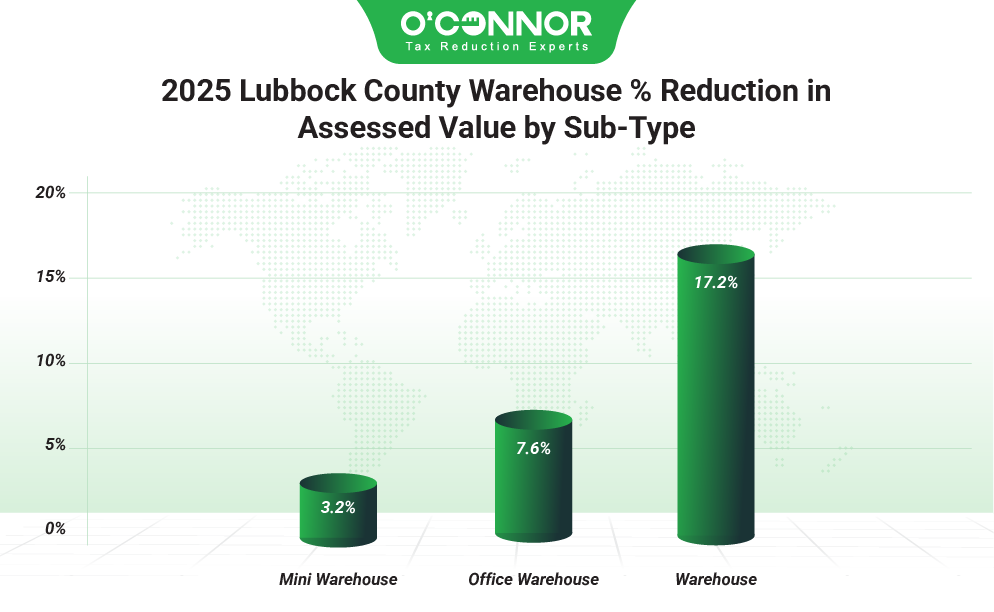
There were three subtypes of warehouses, according to LCAD. Mini warehouses had the highest total of $166.52 million after a reduction of 3.2%. Generic warehouses saw a massive reduction of 17.2%, which translated into a final sum of $83.96 million. Office warehouses only saw a total of $2.55 million, which was achieved after a cut of 7.6%.
Lubbock Demonstrates How Powerful Appeals are in Even a Limited Fashion
It should be evident that property tax appeals can have an excellent impact on the bottom line. As we saw in this article, even a relatively small number of appeals were able to sway the total taxable value of commercial properties. This was also seen to a lesser extent for homes. In both cases, it is clear that taxpayers would benefit from more protests. Thankfully, LCAD is not too aggressive in raises, which means taxpayers are not facing giant spikes for the most part. This should not make residents complacent, however, as there is a great potential for savings, including possibly erasing gains from years past, as a few commercial properties were able to do. Values cannot increase because of appeals, making them a no-risk proposition.
If you are looking to file a property tax appeal of any type, it is usually best to have experts to help you along the way. We at O’Connor have been doing just that for over 50 years and aided over 185,000 clients in their pursuit of lower taxes in 2024 alone. Based in Houston, we have a strong grasp of how to fight Texas appraisal districts, including expansive knowledge about what evidence is required to please either LCAD or the ARB. In 2025, we were able to save our clients $7.67 million in taxable value for Lubbock County. There is no cost to join O’Connor, and you will only pay if we are able to lower your taxes.

